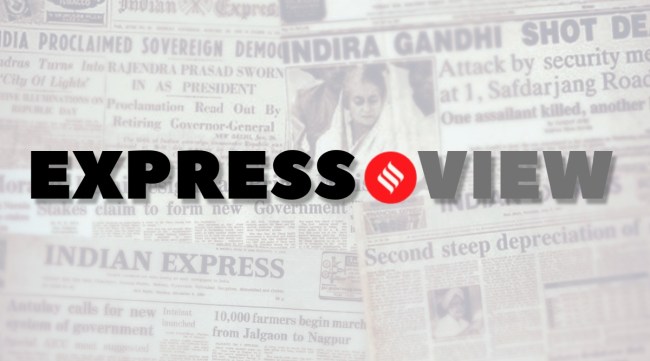Opinion From Bharat Jodo to Jan Aakrosh: The Yatra lives on
Despite the leaps in technology and communication, politicians are on the ground, walking the talk. But a robust organisation is necessary to harness and channelise the energy generated by a yatra, build on its message, take it to the voters.
 Gandhi awakened a nation against the colonial rulers with the Salt March in 1930, and in the process, showcased the Yatra as a powerful instrument of political assertion and a claim by a subjugated people to agency.
Gandhi awakened a nation against the colonial rulers with the Salt March in 1930, and in the process, showcased the Yatra as a powerful instrument of political assertion and a claim by a subjugated people to agency. The Rahul Gandhi-led Bharat Jodo Yatra arrived in Delhi last week and will continue its journey to Kashmir after a break. In Bihar, on January 5, Chief Minister Nitish Kumar will undertake another pan-state yatra — over the years, he has done several. Both the West Bengal and Bihar Congress units have announced state-level yatras. In Rajasthan, where elections are due next year, the BJP has been on a Jan Aakrosh Yatra since December 1 as part of its campaign against the state’s Congress government. In late January, TDP supremo Chandrababu Naidu’s son, N Lokesh Naidu, is set to go on a state-wide padayatra to highlight the failures of the YSR Congress government. The high-profile Bharat Jodo Yatra may have sparked a conversation on the efficacy of this mode of political outreach but this is an idea that has persisted since the days of Mahatma Gandhi. Despite the many leaps in technology and communication moving to the digital space, it refuses to fade away. Its resilience marks the reassertion of an old belief perhaps: Politics is essentially about people and personal contact remains key.
Gandhi awakened a nation against the colonial rulers with the Salt March in 1930, and in the process, showcased the Yatra as a powerful instrument of political assertion and a claim by a subjugated people to agency. But of course, not every politician on a yatra who invokes Gandhi has been as successful or impactful. Over the years, the yatra has been used to serve various purposes, from being a vanity project for the leader to a mobilisational tool and force multiplier, or a mere assertion of relevance. Janata leader and later prime minister, Chandra Shekhar, could emerge as the country’s premier Opposition leader after his Bharat Yatra in 1983. L K Advani’s Rath Yatra for a Ram temple at Ayodhya polarised the country, left a trail of violence in its wake and turned around the political fortunes of the BJP. Many state leaders organise yatras timed with the assembly poll calendar. The several yatras Nitish Kumar has undertaken as chief minister have upended the idea of yatra as an instrument of the Opposition: His yatras are aimed at projecting the persona and achievements of the government in Bihar — a response, perhaps, to the fact that the very authority of the state was seen to be terribly weakened on the watch of his predecessor.
The yatra is not enough. There is much work to be done to lend it meaning or lasting effect. A robust organisation is necessary to harness and channelise the energy generated by a yatra, build on its message, take it to the voters. There has to be clarity about the message, but the messenger is also key. It takes the hard labour of politics to take the journey to a destination.




